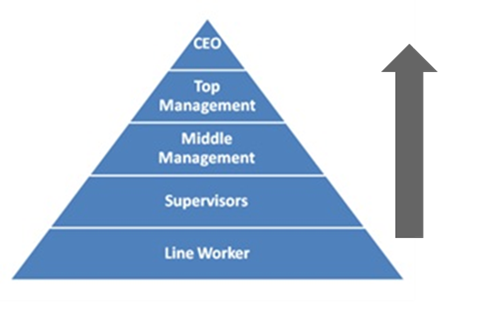On of the best leadership books that I have read is No Rules Rules by Reed Hoffman (Netflix CEO) and Erin Meyer. The book is about how Reed Hoffman has created a high-performance culture and organization (Note: the examples and figures in the post either come from or are inspired by No Rules Rules).
In fact, I have been having various executive teams read the book, and they have been loving it. Of the many topics covered in the book, there is one that is resonating the most with them: The encouragement and direction to lead with context instead of control.
In this article, I want to explain the difference between these two styles of leadership.
Leading with Control
It is important to recognize that the historical way of leading and coordinating group behavior during the industrial revolution, and still today, is to establish clear rules and processes.
What it looks like – Part 1
One way to explore what this looks like is to consider how you might manage a cook you just hired to make a Thanksgiving dinner for your family. Here is what you would be inclined to do if you led with control:
- Give the cook a schedule
- Give the cook the recipes you want made
- Give the cook the ingredients needed
- Show the cook what the dishes are to look like
- Tell the cook that you need to make sure you try the dishes before they are served
- Tell the cook that while the cook can suggest his/her own recipes, they need to get your approval before cooking them
What it looks like – Part 2
When this approach is taken in an organization, the structure looks like the pyramid below, and the direction of decision making points in the direction of the CEO. In such a structure, there is a lot of escalation.

Primary Benefits
The benefits of leading in this way is that:
- Leaders feel safe (problems are not likely to occur), in control, and stable
- It eliminates variation
- It is efficient and precise
Primary Limitations
While this approach toward leaders feels good to the leader, it:
- Is not very engaging for the followers
- Stifles creativity and innovation
- Is not very agile
Leading with Context
It is important to recognize that the historical way of leading and coordinating group behavior is very much losing its relevance, particularly in service-oriented and innovation-needed organizations (as opposed to manufacturing organizations). There is a more modern way of leading and coordinating group behavior, and it involves creating freedom and responsibility for those under one’s stewardship.
What it looks like – Part 1
One way to explore what this looks like is to consider how you might manage a cook you just hired to make a Thanksgiving dinner for your family. Here is what you would be inclined to do if you led with context:
- Tell the cook when you will be eating
- Tell the cook the various dietary requirements of those who will be eating
- Tell the cook about some recipes that have worked in the past and some that have flopped
- Provide some structure for the cook about what is expected (e.g., a protein, salad, and at least one vegetable)
- Work with the cook to come up with an overall theme
- Ask the cook to find and choose the recipes he/she thinks will be best
What it looks like – Part 2
When this approach is taken in an organization, the structure looks very different than the pyramid. Instead, it looks like a tree. At the base is the CEO, who provides the foundation and context for the next layer up, and so forth. In this structure, the decision making still moves up, but it gradually moves away from the CEO and toward the people who are on the front lines.

Primary Limitations
This type of a structure is really scary for leaders because they don’t feel “in control” and it feels risky (greater potential for variation, lower efficiency, and lower precision).
Primary Benefits
But it has huge benefits that are absolutely necessary for most organizations today, which include
- Being faster, more flexible/nimble, and more agile
- More engaging and attractive – We get more commitment and motivation out of employees, and the organization does a better job of winning and retaining top talent
- Spurring creativity and innovation
Conclusion
What I have found with the executive teams that I have worked with is that they recognize that they:
- Tend to lead more with control
- Need to lead more with context
So, why don’t they?
At the root of their reluctance to reinvent themselves in this way is FEAR.
They are afraid of what might happen if they empower instead of control. They are afraid of the possibility of not looking good or failing.
So, what does that mean for us?
If we want to lead more with context and less with control, we have got to more fully awaken to and overcome our fears. This is vertical development.
If you would like to:
- Personally work on awakening to and overcoming your fears so that you are more able to lead with context, or
- Help your leaders work on awakening to and overcoming their fears so that they are more able to lead with context…
Let’s connect. I would love to be of help. You can connect with me here.
And, in next week’s article, I will write about a very specific issue that is connected to fear that affects leader’s ability to lead with context: trust. Keep an eye out.










